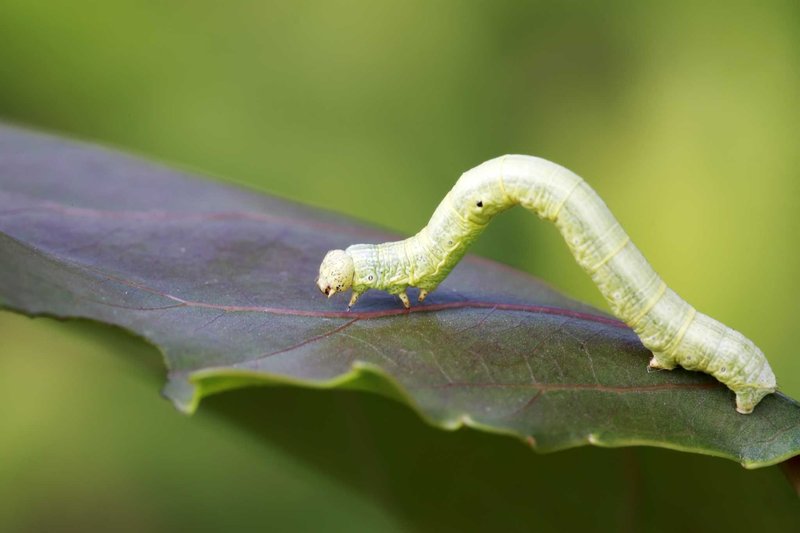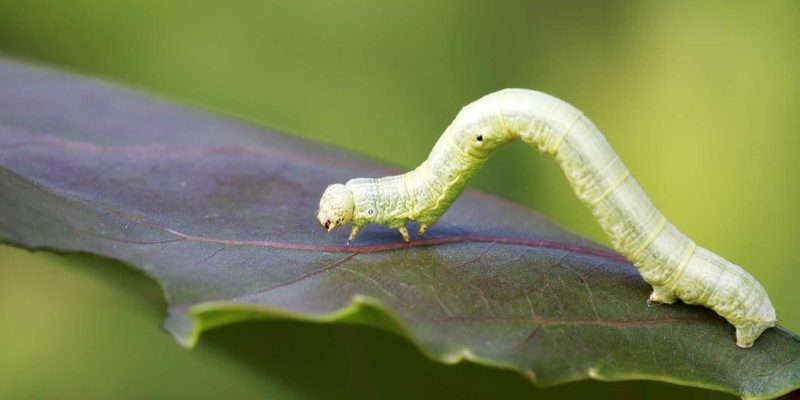
Imagine a tiny machine, moving forward in a slow, deliberate way, almost like it’s measuring or “inching” its way through the world. This unique style of movement serves a purpose, allowing inchworms to navigate their environment while avoiding predators. So, let’s dive deeper into the world of inchworms, exploring what they are, how they move, and why they’ve captivated our attention.
What Exactly Are Inchworms?
Inchworms belong to the larval stage of moths, primarily from the Geometridae family. These little guys often get their names from their distinct way of moving, where they seem to “measure” the ground with each movement, almost like they’re taking tiny steps. They range in color from green and brown to yellow, helping them blend in with their surroundings.
There are over 2,000 species of inchworms, each adapting to various environments. Most inchworms are found in gardens, forests, and other lush areas where they can find plenty of leaves to munch on. Depending on the species, they can grow anywhere from an inch to several inches long, making them an interesting, albeit common, sight in nature.
How Do Inchworms Move?
You might have noticed that inchworms have a pretty unique way of moving. Instead of crawling like most caterpillars, they move in a looped, “looping” motion. They have two sets of legs at the back and one at the front, which allows them to stretch out and then pull themselves forward. It’s almost like they’re performing a little dance!
Here’s how it works: an inchworm will extend its front legs forward and then pull its back legs up to meet them. This creates a distinctive “inching” movement that looks almost like a little measuring tape. This method helps them stay low to the ground, making it easier to avoid hungry birds and other predators.
Why Do Inchworms Move This Way?
Now, you might be wondering why inchworms have this unique form of locomotion instead of just crawling like other caterpillars. The answer lies in survival. By moving in this way, inchworms can remain hidden among leaves and branches, making it harder for predators to spot them. Their ability to blend in with their environment is crucial for staying safe.
Additionally, their movement helps them navigate trees and shrubs effectively. Since they primarily feed on leaves, inchworms need to reach different parts of a plant without attracting too much attention. By inching along, they can easily find food while maintaining a low profile.
The Diet of Inchworms
Speaking of food, inchworms are primarily herbivorous, which means they love to munch on leaves. They’re particularly fond of deciduous trees and shrubs, including oak, maple, and cherry. Their narrow, elongated bodies help them blend in with the leaves, making it easier to feast without being easily noticed.
As inchworms grow, they’ll molt several times, shedding their skin. Each time they do, they increase in size and may shift their diet slightly depending on what’s available. This adaptability allows them to thrive in a variety of environments, making them quite the resilient little creatures.
The Life Cycle of Inchworms
Inchworms start their lives as tiny eggs laid on leaves or bark. Once they hatch, they enter the larval stage, which can last several weeks to months. During this time, they’ll feed voraciously, eating as much foliage as they can.
Once they’re ready, the inchworm will find a safe spot to pupate, where it will transform into a moth. This is where the real magic happens. After a period of time, usually a few weeks, the inchworm emerges as an adult moth, ready to continue the cycle. This metamorphosis is one of nature’s fascinating processes, showing how creatures adapt and evolve over time.
Inchworms: Importance to the Ecosystem
While they may be small, inchworms play a significant role in their ecosystems. First and foremost, they serve as food for various birds, insects, and other animals. By being part of the food chain, they help sustain various species, contributing to a healthy, balanced ecosystem.
Additionally, as inchworms munch on leaves, they can help with plant growth. By consuming certain leaves, they may promote new growth, allowing more sunlight to reach lower leaves. This process can help maintain the overall health of trees and shrubs in their environment.
Inchworms in Culture and Folklore
You might also find inchworms popping up in stories and folklore. In some cultures, they symbolize patience and perseverance. After all, their slow and steady movement reminds us that progress doesn’t always have to be fast. It’s a nod to the idea that good things come to those who wait.
In addition, inchworms have inspired various art forms, from children’s books to animations. Their quirky behavior and fascinating life cycle make them a beloved subject in nature studies and storytelling.
How to Spot an Inchworm
If you’re curious about seeing inchworms in action, look for them during spring and summer months when foliage is lush. Focus on trees and shrubs, especially oaks, maples, and fruit trees. They often hang out on leaves, camouflaged against the greenery.
When searching for inchworms, look for their characteristic movement. They’ll typically be inching along branches or leaves, moving in that signature looping motion. With a little patience, you might just catch one of these quirky creatures in action!
In conclusion, inchworms are more than just little green critters; they’re fascinating creatures with a unique way of moving that sets them apart. Their survival strategies, diets, and roles in the ecosystem make them interesting to observe and learn about. Next time you see one inching along, you’ll know just a bit more about these charming little larvae and the wonders of nature!

